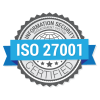How do you reduce procurement costs, improve efficiency, and track and control workflows?
The answer: Spend management
Over the years, spend management has evolved into a continuous, comprehensive approach. This goes a long way to keeping your business in check and improving your bottom line.
Since Covid-19 first emerged, procurement organizations have faced a barrage of new challenges. From overcapacity in many segments to supply chain demand.
This begs the question: Can spend management analytics provide the solution?
Let’s find out…
What’s spend management?
Spend management is a process that businesses use to analyse and track their business costs.
In the past, most of these processes were manual. For example, businesses used spreadsheets to manage their spending. But, often, these proved unreliable, time-consuming, and a waste of money.
Fast forward to today, and spend management has mainly become automated. New spend management software has emerged to reduce the hassle of manual tasks.
In fact, most management software includes tools like:
- Expense tracking
- Invoice creation
- Reporting tools
…and more.
Issues in procurement
More than 54% of businesses have digitized and automated their procurement processes to some extent.
Although digital procurement is efficient and comes with a range of benefits, digital tech still comes with its own set of challenges. Let’s take a look at some of the most common issues experienced in digital procurement.
Risk management
Procurement doesn’t come without its risks, and managing them can be challenging. You’ll have to contend with everything from invoice fraud to non-compliance.
With a supply chain that’s centralized and transparent, these risks are increased. As is the likelihood of experiencing issues with legal and internal compliance.
Managing vendor relationships
Managing vendor relationships is at the heart of procurement. Nurturing relationships can help meet quality and price demands and keep business moving.
Unfortunately, many procurement organizations find managing vendor relationships a challenge. This is especially true if they lack a system that helps with increasing visibility of spend in relation to complex services like technology and telecom.
Inefficiencies in processing
If procurement organizations are still using manual methods, they’re more likely to experience inefficiencies. Namely, because most manual processes typically start with the all data not being available, which leads to errors, including bias and delays are created in the entire procurement process.
Lack of access to centralized data
Data is at the core of making informed business decisions. Yet, procurement organizations can struggle to gather analytics without access to centralized data. As a result, this is more likely to result in poorer procurement decisions.
The benefits of spend management analytics
According to Mckinsey, the main goal of a procurement organization is to optimize external spending with suppliers and discover a source of competitive advantage concerning:
- Cost
- Availability
- Quality
- Sustainability
Yet, when you consider the issues most procurement organisations face, it’s no surprise so many struggle to reach this goal. Could spend management analytics be the answer?
Let’s take a closer look at the benefits of spend management analytics. More specifically, why they could offer the solution to your digital procurement issues.
Spend visibility
Are you struggling with a poor roi? Unable to identify the best deals and prices offered by your suppliers? Enter: spend visibility.
Procuring spend management analytics software can unlock a goldmine of info. Expenditure data can be gathered into records and used to improve efficiency and procurement costs.
You’ll also be able to identify where excess expenditure is going. This improves capital, but also helps procurement organizations manage risk and reduce processing inefficiencies.
Forecasting
Spend analysis also allows procurement industries to forecast accurately. Forecasting future spending is the key to keeping your business in check.
It’s a great way to understand recurring vendor spending.
Plus, it can be used to source teams to work in each department. When paired with contract intelligence, industries can scale compliance across many industries.
Risk management
One of the most significant benefits of spend management analytics is risk management. The risks associated with maverick spending can impact profits, compliance, and contract fulfilment.
But with management analytics, you can reduce a considerable portion of the dangers your procurement industry faces. When your organization ensures spend visibility with analytics, you can identify unmanaged costs and their root cause.
Together, these benefits can help improve several critical components of your procurement organization. This goes a long way to improving your bottom line.
These key components are:
Supply chain
Supply chains can be strengthened by making informed decisions based on real-time data. Processes informed by spend management analytics can also boost morale and increase confidence in the solution.
Cash and cost
You’ll have greater visibility over your expenses. Not to mention, you’re better positioned to:
- Identify risks
- Recognize opportunities
- Avert potential threats
All of which can help protect your investment and increase your ROI.
Supply resilience
When you can track cash, cost and improve your spending, you’ll help build your supply chain’s resilience.
With telecom spend management and analytics, the benefits work in a ‘trickle down’ effect. This bounces from one element of your procurement organization to another. Consequently, improving your bottom line.
Are you ready to start utilizing spend management analytics?
When executed well, spend management can free up as much as 30% of a technology and telecom budget, without the need to change suppliers.
Unfortunately, procurement today is a minefield. So, there’s now more reason than ever to ditch your manual processes and move to automated spend management analytics.
This works wonders for streamlining your business, increasing profit, improving your supply chain and get the best value return from your supplier contracts.


